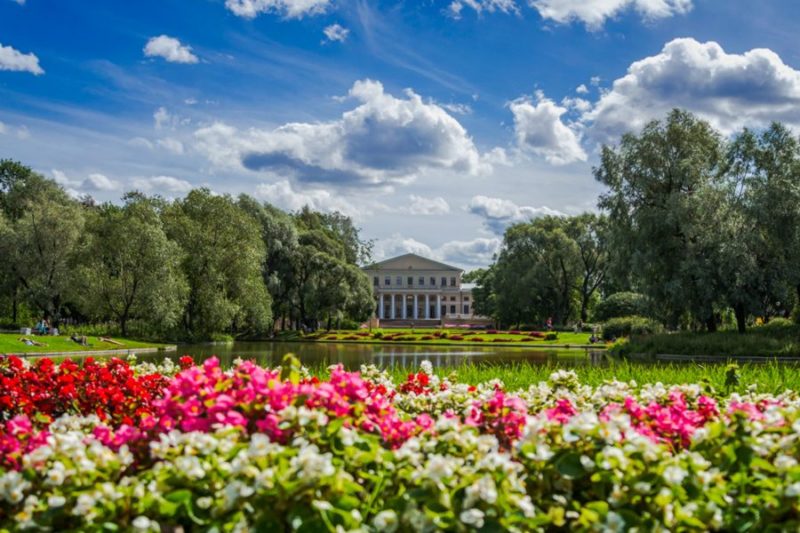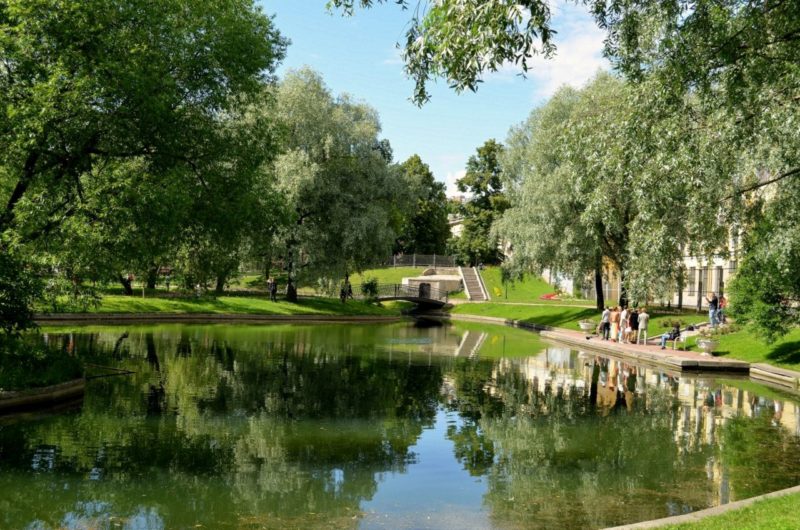Yusupov Garden in St Petersburg

Yusupov Garden/Yusupovsky Sad is a quiet picturesque place in the Admiralteysky district - the old center of St. Petersburg. In the depths of the garden, the classic lines of the old palace of the princes Yusupov attract the eye. In front of the mansion, among the greenery, there is a large pond of fantastic shape, romantic bridges are spread from the shore to three islets, where lanterns twinkle in the evenings, and lovers sit on benches. All this gives rise to the image of the nineteenth century, dear to the heart.
The lands from the Fontanka River to the present Sadovaya Street/Sadovaya ulitsa in 1724 were received as a gift from Peter the Great by the Tsar’s closest ally - Prince Grigory Yusupov. After 6 years, Prince’s son Boris ordered building a house designed by Domenico Trezzini here and breaking up a small garden.

At the end of the XVIII century.
Nikolai Yusupov, who was considered one of the truly worthy and enlightened people of that time, entrusts the brilliant Giacomo Quarenghi with an extensive renovation of the estate. The Yusupov Palace/Yusupovsky Dvorets was erected, a pond with islands was built, a blossoming garden with paths leading to cozy summerhouses, grottoes and sculptures was laid out among the hills. In the pond flocks of goldfish flashed, the fins of which were decorated with gold rings with shining diamonds.
Spacious greenhouses were built in the manor house, where, besides currants, they raised tart treats for that time - figs and pineapples, Spanish cherry-cherries and melons with watermelons.
After the divorce of Prince Yusupov, in 1810 the mansion with the park was transferred to the Institute of Communications, and because of the construction of educational buildings, the garden area became much smaller. In the 1930s, an openwork cast-iron fence was erected along Sadovaya Street/Sadovaya ulitsa, and the famous gardener Hermann Eilers has set up greenhouses in the park to grow the best flowers in St. Petersburg.

In 1862, a large-scale reconstruction was carried out in the park: chain bridges were built over the water surface of the pond between the islands, the station was opened for boat trips, and two fountains were installed. And in the spring of 1863, by order of Alexander II, the northern part of the garden became available to the general public.
The Yusupov garden/Yusupovsky Sad turned out to be an attractive place for the residents of the nearby neighborhoods to celebrate. It arranged rides, launched balloons into the sky, having fun in the dash. In winter, skates and sledges were skated in the park, slides were poured on ponds, snow fortresses were built, and during Christmas, the Yacht Club organized festivals, public parties, and noisy fireworks.
Since 1877, amateur speed skaters mastered the land of the Yusupov Garden, and the old garden became the birthplace of Russian figure skating and the first sports tournaments held on snow-covered ponds, first Russian, and from the late 19th century. - and international. After 10 years, a figure skating school was opened here, where Nikolai Kolomenkin-Panin perfected his skills, becoming the first Russian Olympic champion in 1908. In the same years, Yusupovsky Garden/Yusupovsky Sad presented his name to the first hockey team in Russia.

By 1894, in order to make room for training the Imperial Society for rescue on the waters, all the trees northwest of the pond were cut down.
In the pre-revolutionary years of the 20th century.
The Ministry of Railways became the owner of the garden, and the land was built up with buildings intended for the editorial board of the Bulletin of Transport Communications magazine, inspection and office offices, apartments of ministerial servants. At the same time, the building of the Railway Museum was erected under the project of the engineer-architect of the ministry's house management department, P. S. Kupinsky.
Even in the difficult post-revolutionary period, the school of figure skating did not stop here, and in 1924 in the territory of the Yusupov garden, which changed its name to the Leningrad Children's Park of the Oktyabrsky district, the first young state figure skating championship took place.
In 1990, the garden regained its historical name, Yusupovskiy, but, as before, it belongs to the “possessions” of the University of the Paths of Communication.